There can be no better backdrop for a display of the ancient art of falconry than in the fairytale setting provided by Dunrobin Castle and its gorgeous gardens.
The Dunrobin Castle falconry display tops off a visit to one of Britain’s oldest continuously lived-in houses, dating back to 1275. However, falconry began long before Dunrobin Castle appeared.
We spent a whole day at the Castle on one of our road trips around Inverness, Scotland and were so enthralled by the morning display we stayed to watch the second in the afternoon.

🦅 Dunrobin Castle Falconry in a Nutshell
- Setting: It is set against the historic Dunrobin Castle, one of Scotland’s oldest continuously inhabited houses, dating back to 1275.
- Falconry Displays: Experience the majestic flight of birds of prey like Harris hawks and peregrine falcons in a breathtaking display of ancient falconry techniques.
- Frequency and Timing: Displays occur twice daily, providing ample opportunity to witness these spectacular birds in action.
- Location: The falconry takes place on the castle lawns, with manicured gardens and impressive architecture providing a stunning backdrop.
- Historical Insight: The display showcases falconry and delves into its history.
- Visitor Tips: Arrive early for the best viewing spots; the morning display is often less crowded. The castle and gardens are closed from November to the end of March.
- Photography Opportunities: Ideal for photography enthusiasts, the event offers dynamic scenes of flying raptors against the scenic castle setting.
- Best Time to Visit: The falconry display is most enjoyable in the spring and summer when the castle and gardens are in full splendour.
- What to Bring: Binoculars, a camera, and a picnic to enjoy in the gardens after the display.
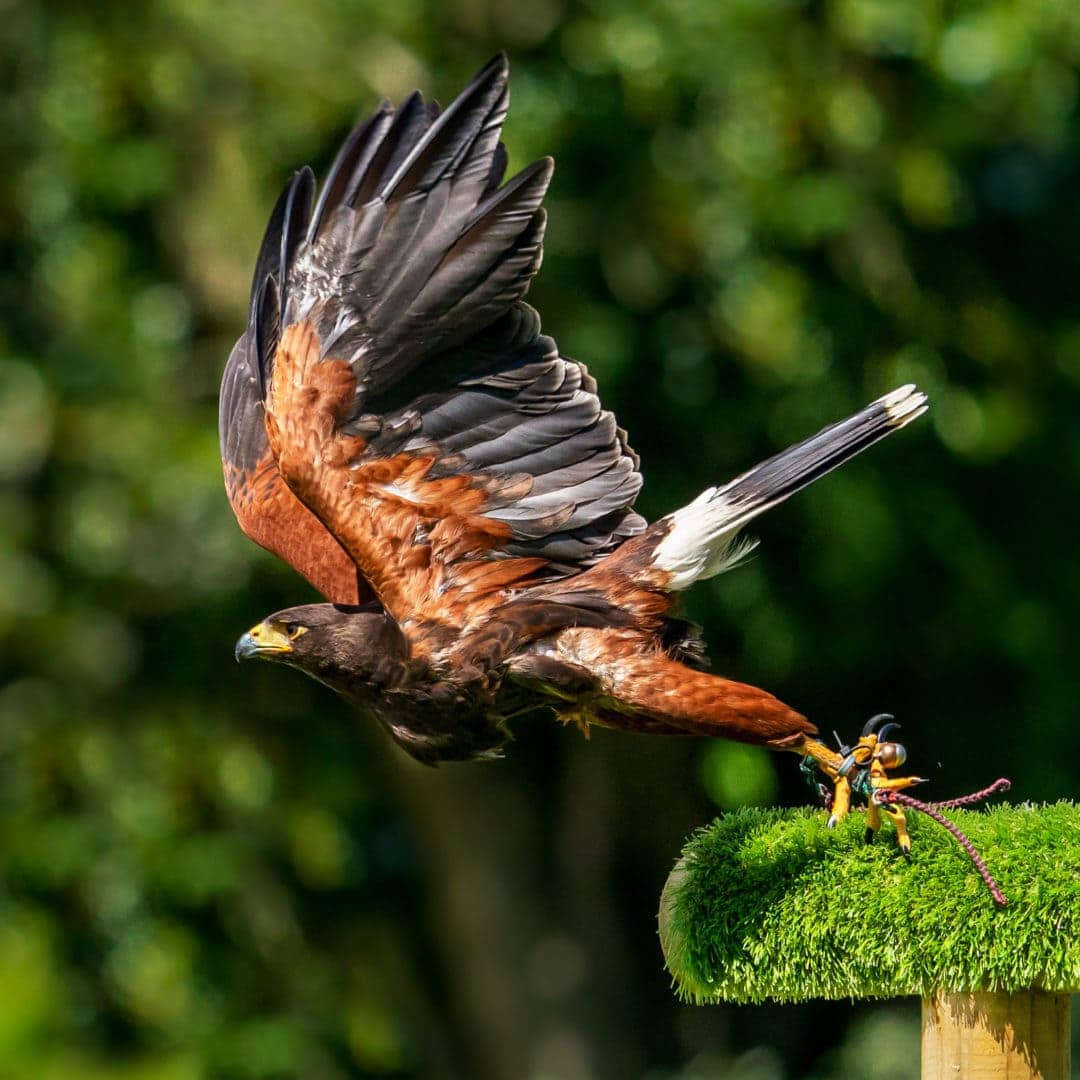
What’s Included in this Dunrobin Castle Falconry Post?
Dunrobin Castle Falconry – Some History
Evidence suggests that falconry, the art of training birds of prey to hunt and kill wild prey for humans, began as far back as 6000 to 4000 BC on the plains of Mongolia.
It wasn’t until the 6th century that falconry became popular throughout Europe and was the prevailing sport of royalty. By the 1600s, rules dictated who could own and fly certain birds of prey, with falcons reserved for the aristocracy; the lowly servant was able to own a kestrel.
The Dunrobin Castle falconry display, performed by Manor Falconry, explained the history of this specialised art and its connection to the castle.

Planning a Trip to Scotland?
- 🚗 Hiring a car? We recommend getting a quote from DiscoverCars
- 🚐 Hiring a campervan? We recommend Motorhome Republic
- ⛑ Arranged your travel insurance? Compare quotes from World Nomads & Safetywing
- 🪪 Order your International Driver’s Licence online here
- 🏩 Booked your accommodation? We use Booking.com to find the best deals
- 🐾 Is someone pet-sitting for you? 🐾 We use and love TrustedHousesitters
- (Get 25% off at checkout for new memberships with our discount code: LIFEJOURNEY25)
The Falconry Display at Dunrobin Castle
The Dunrobin Castle falconry display was a fascinating mix of aerobatics and information. The bird and trainer’s incredible skills were astounding. The presenter and falconer, Andy, was engaging and kept the audience enthralled throughout as he led the birds through their display.
We watched the Harris hawk and the peregrine falcon show off their unbelievable skills and learnt how man and bird worked together before guns and modern-day hunting practices dominated.
To be honest, we knew very little about falconry, and I was unaware of their use in hunting.
I had thought it was all just for the show.
How wrong I was.
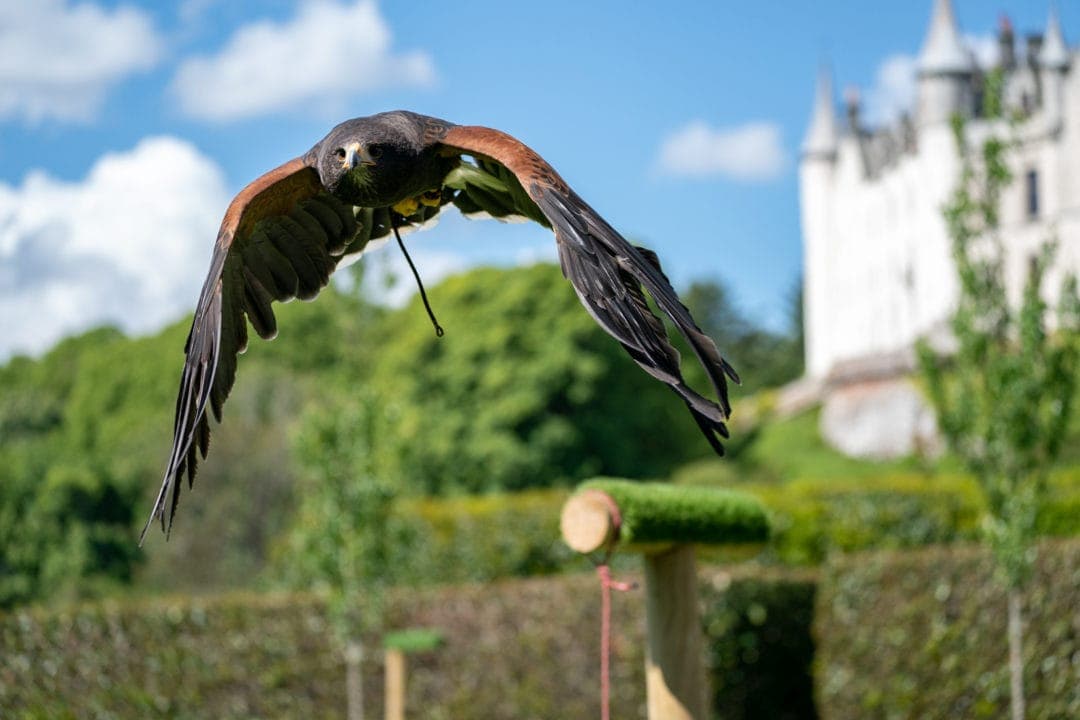
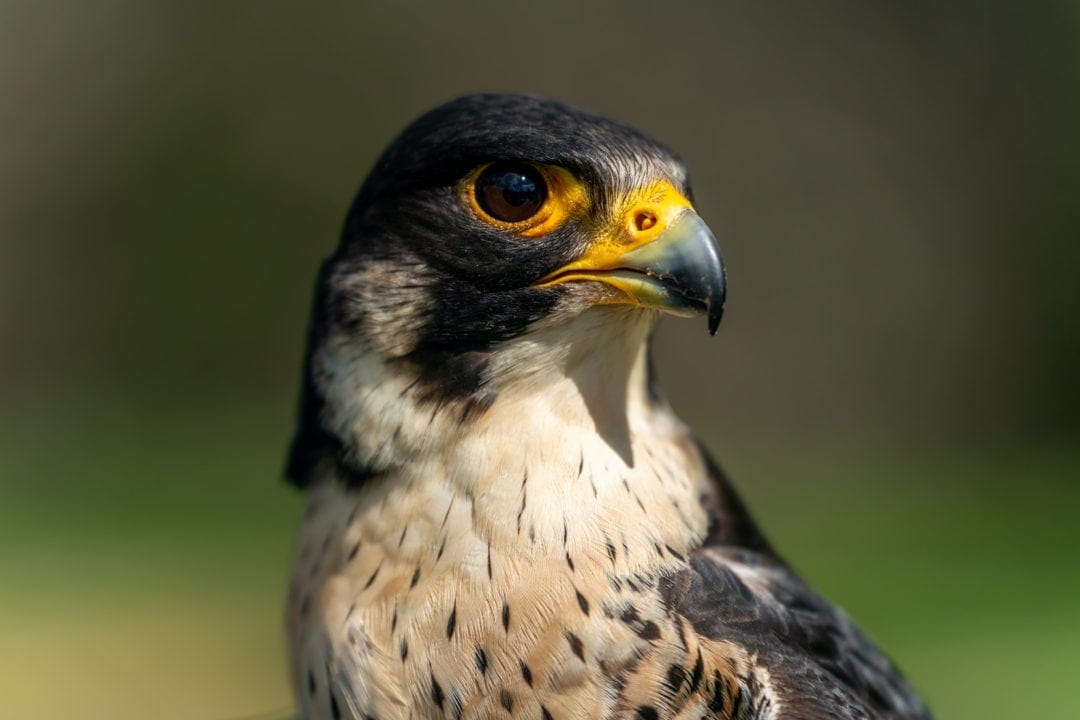
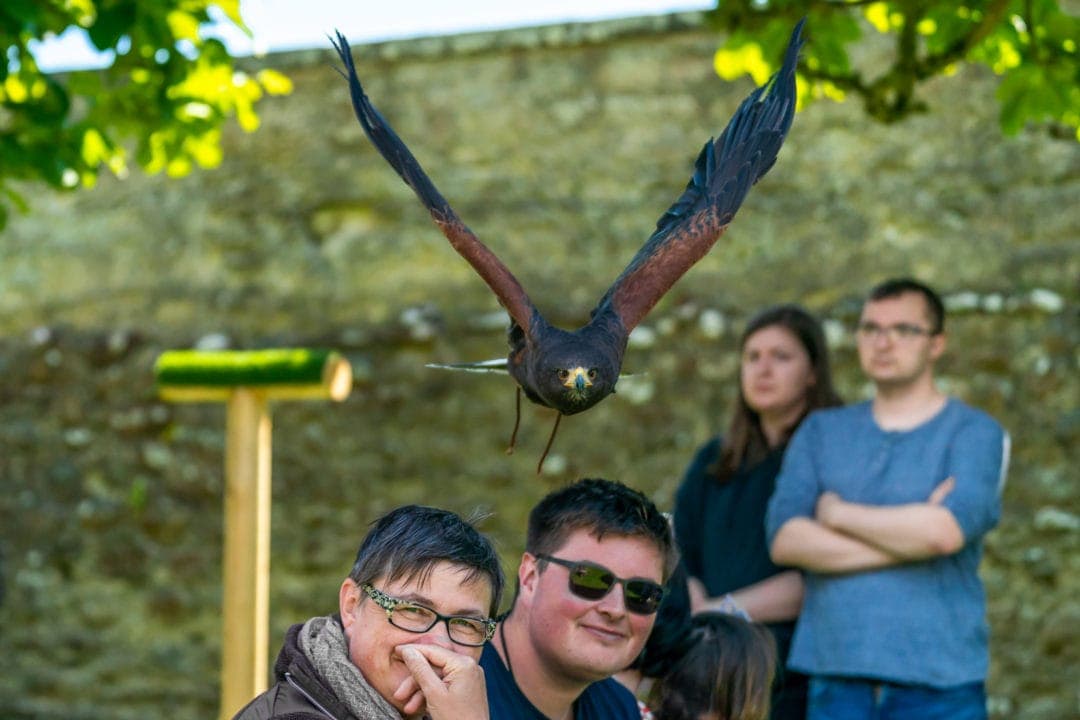
Most Popular Tours, including Dunrobin Castle Falconry
About the Dunrobin Falconry Birds
Falconry involves an incredible amount of care and hours of training. The best way I can describe this relationship is as an owner and his dog. A similar relationship exists between the owner and the bird of prey.
All of the birds on display have been born and raised domestically because taking a bird from the wild in the UK is illegal. Indeed, life in the wild isn’t easy for birds of prey, and many falcons do not live past 12 months.
The average age of a hawk is seven years in the wild but it can live for up to 30 years when owned. It is hardly surprising that those born into falconry outlive their wild counterparts because falconer birds receive the correct food, exercise and healthcare.
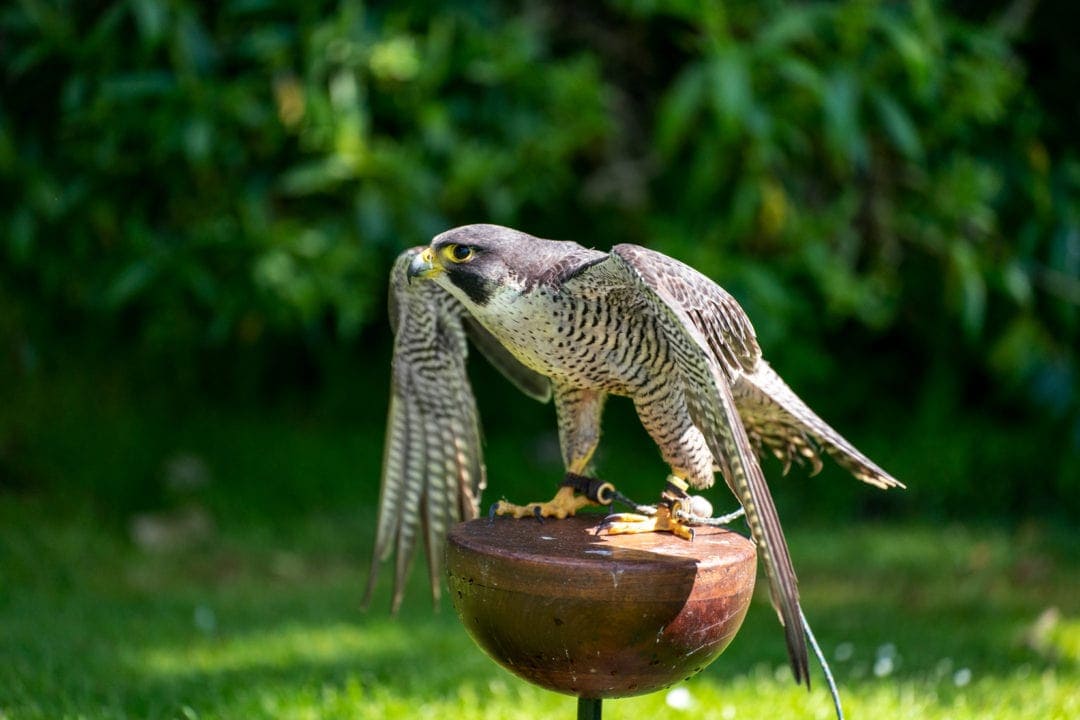
The precision at which the birds weaved their way through the crowd and the incredible speed at which they could swoop was astonishing.
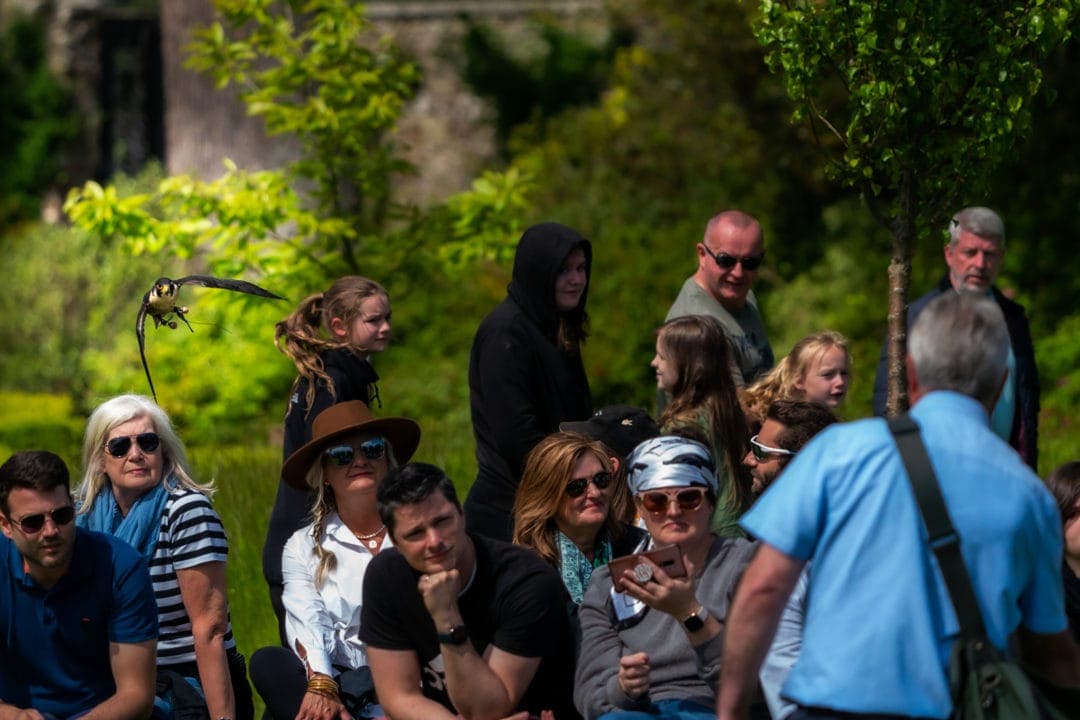
©Lifejourney4two
You may be surprised and even feel sorry for the falcon or hawk wearing a hood when brought into the display arena, but this is to keep the bird calm.
If it can’t see anything, it thinks that nothing can see it, so remains relaxed and chilled when blindfolded. I wish that worked for me!
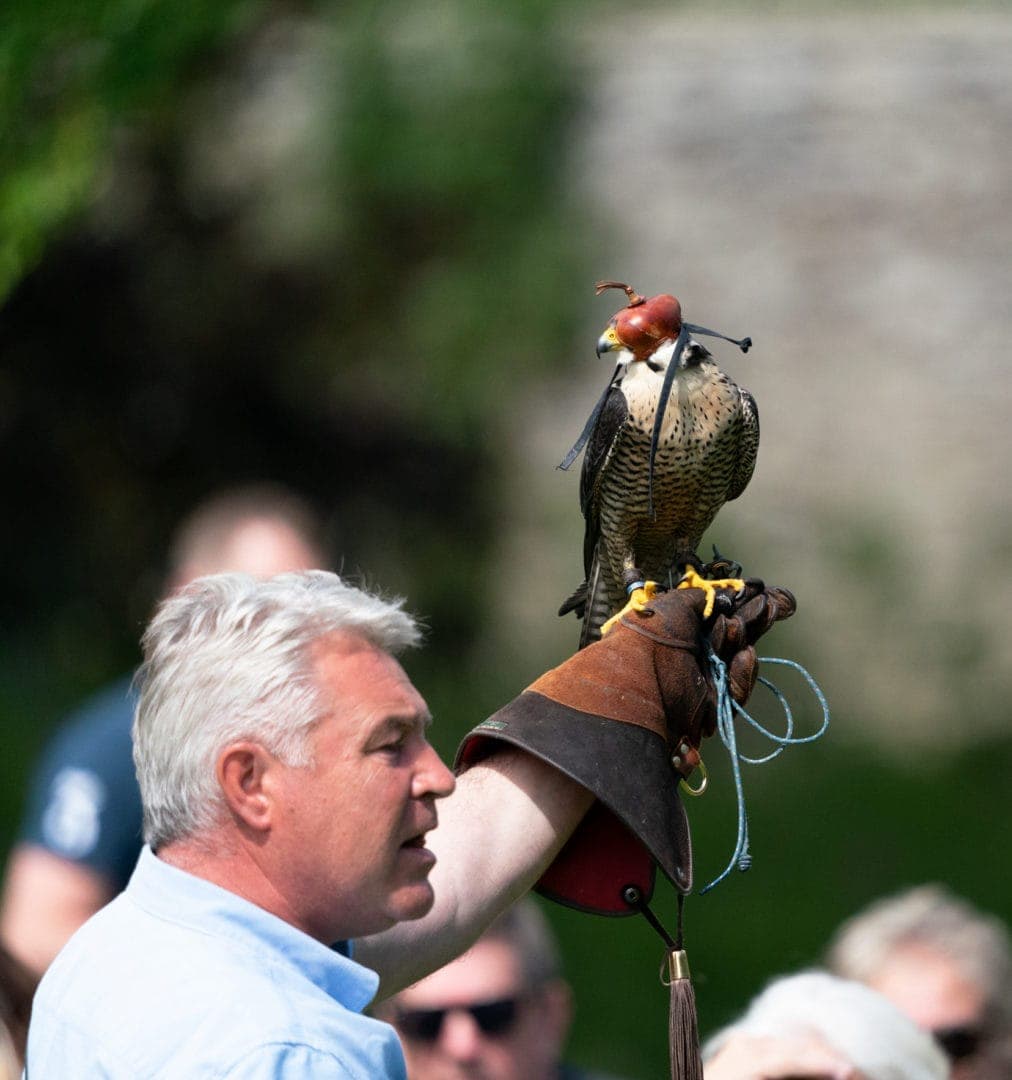
At the opposite end of the lawn are other birds of prey, including more falcons and owls. They are tied to their tethers beside a tray of water.
Again, this may be perceived by some as cruel, but birds of prey naturally sit quietly for long periods to preserve their energy for hunting.
It is like keeping a dog on a lead — it stops them from getting into mischief. Normally, the Dunrobin Castle falconry birds are kept untethered in their aviary and exercised daily.

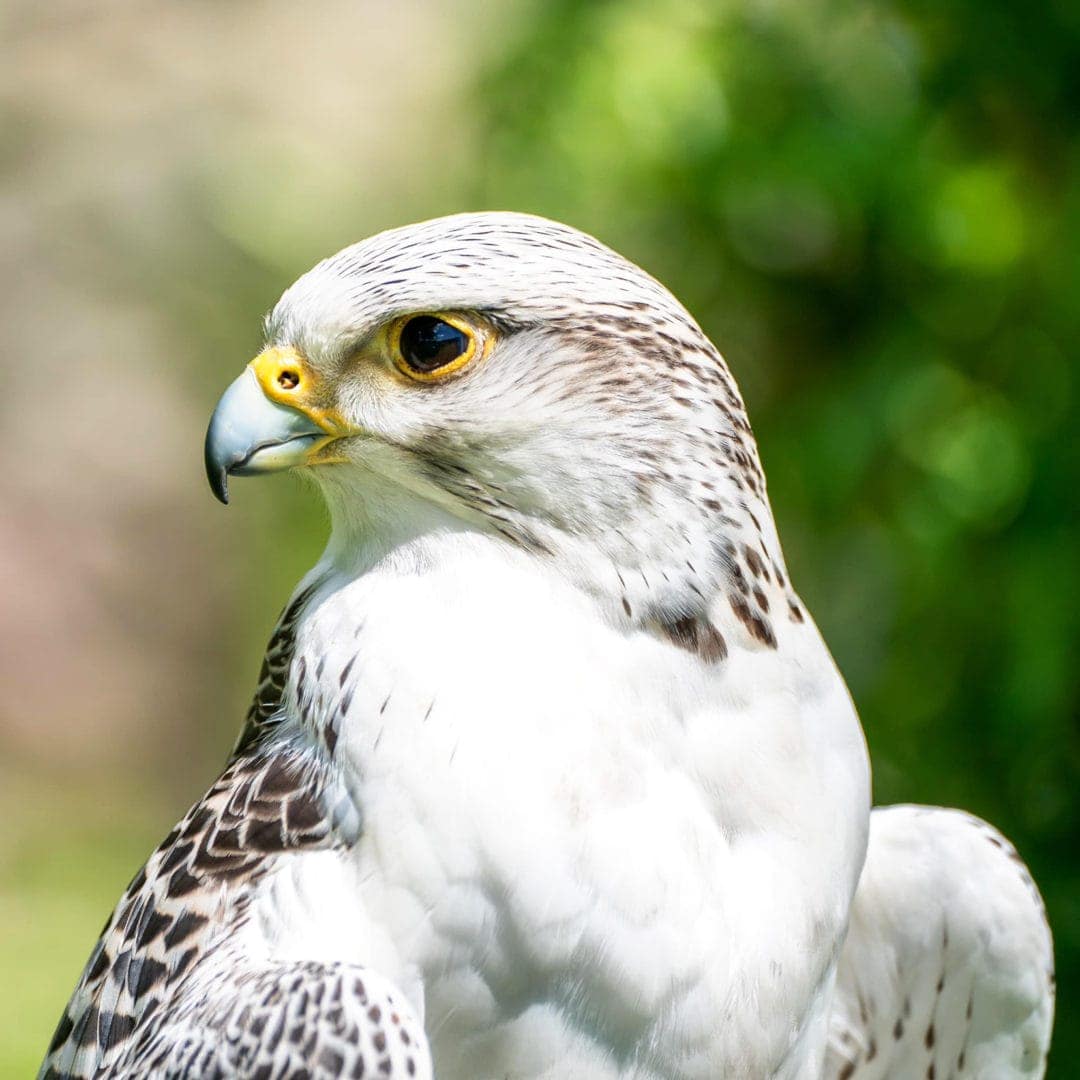

Photographing the Falconry at Dunrobin Castle
If you are a keen photographer, then Dunrobin Castle offers plenty of opportunities to practice your skills.
With the diversity of scenery: inside the castle, the gardens and the falconry with birds moving at such speed, the camera will be working hard. To guarantee a sharp image I set my Sony a9 to a fast shooting speed (20fps), set the ISO AUTO MIN Shutter Speed to 1/4000s.
I mated the Sony 200-600mm lens with my Sony a9 – a superb combination for fast-action photography.
The birds were flying into the shadows, causing my shutter speed to drop, but this was offset by the ISO Auto, set to 100 – 6400. With the camera configured, it was down to me to be predictive in pointing the camera where I thought the bird would be.
Although I tried ‘tracking’ mode, the birds were too small and the background too confusing for the camera to lock on and track them successfully. I had better results using the Wide AF area and relying on the camera to pick up the subject.
The peregrine falcon can reach speeds of 242 miles per hour, so don’t be too hard on yourself if you don’t nail a crisp photo in flight.
For more on capturing the best photos, check out our article on compilation and shooting tips for your photography.
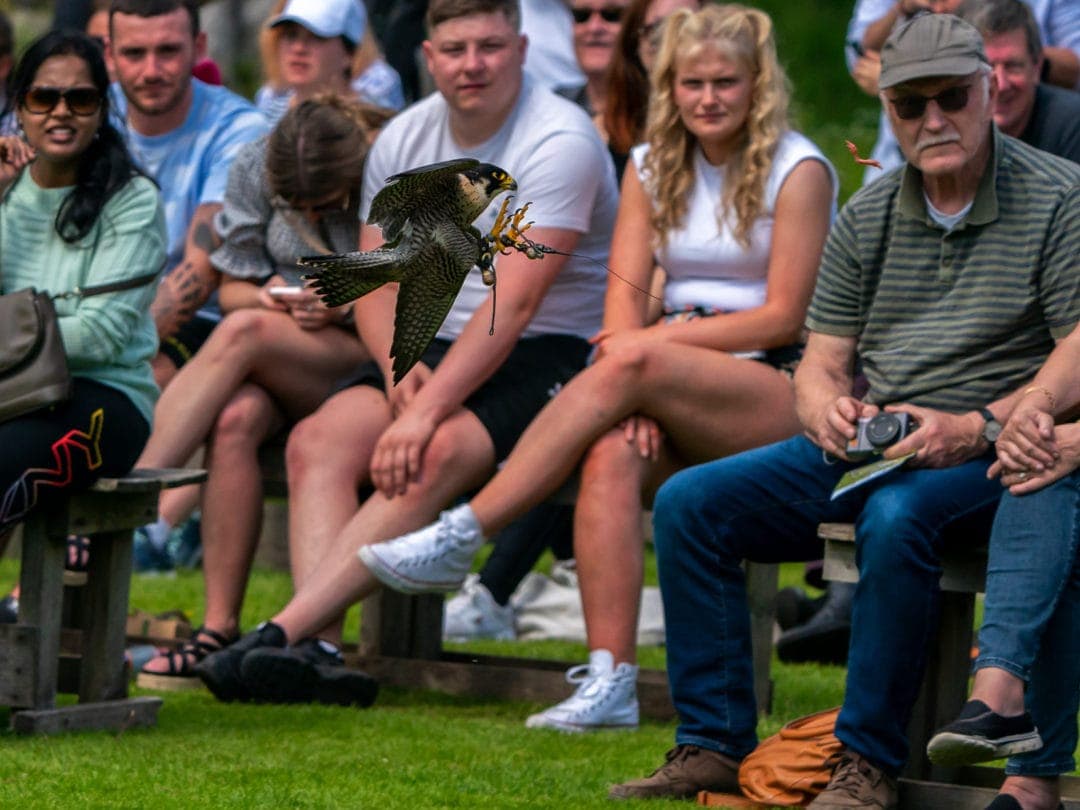
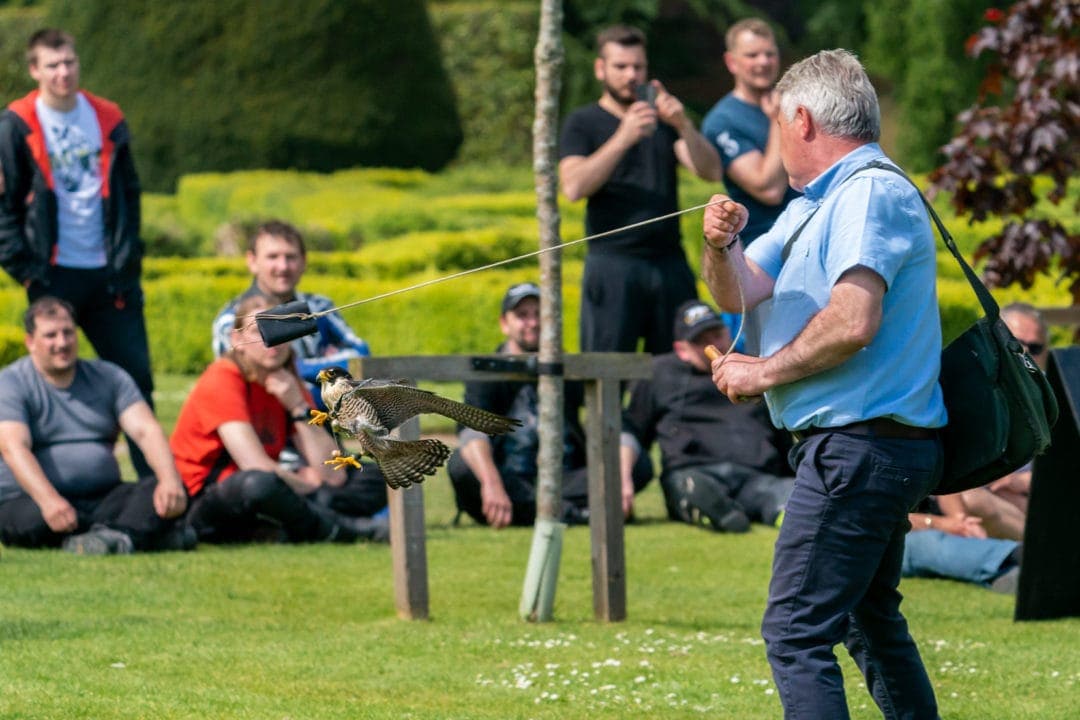
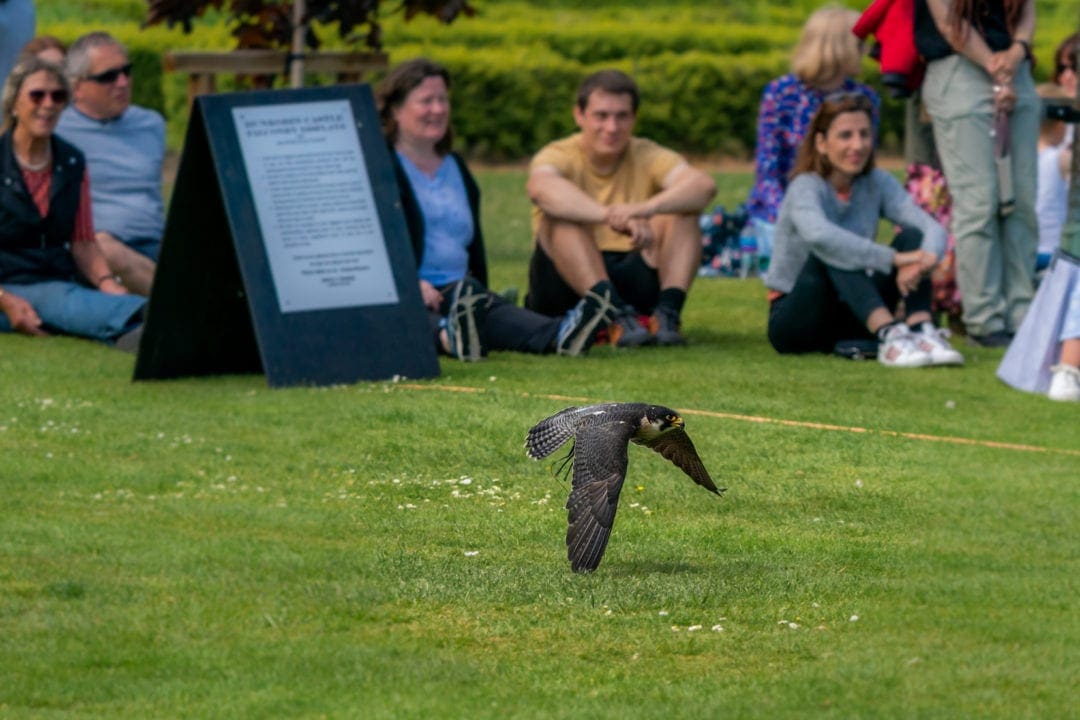
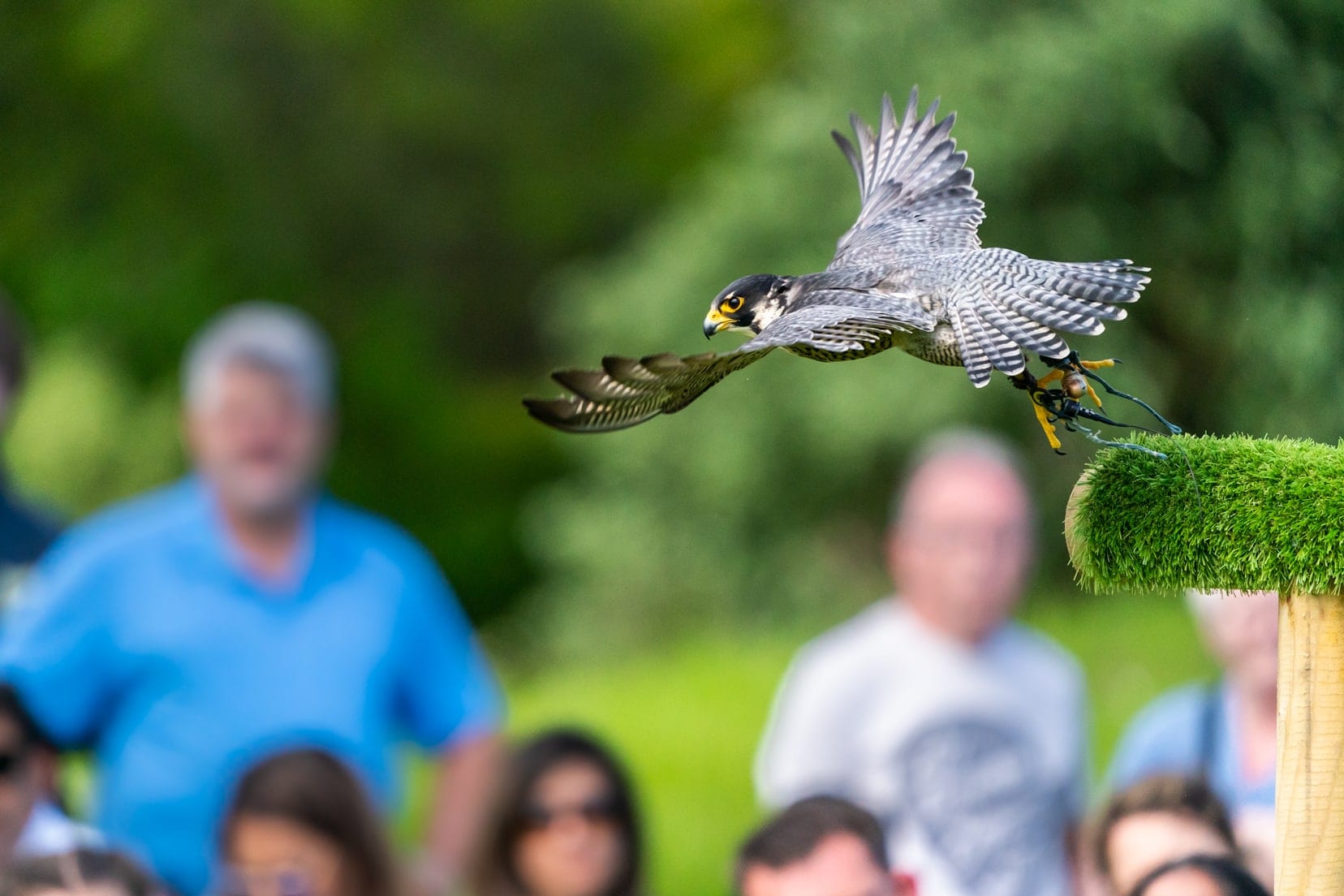

©Lifejourney4two
Dunrobin Castle
Dunrobin Castle sits pretty, overlooking its exquisite gardens and the Moray Firth. Through the centuries, it has been home to the dukes and earls of Sutherland.
The Sutherland clan was one of the seven ancient earldoms of Scotland, acting as protectors of the realm and the main lay advisers to the king.
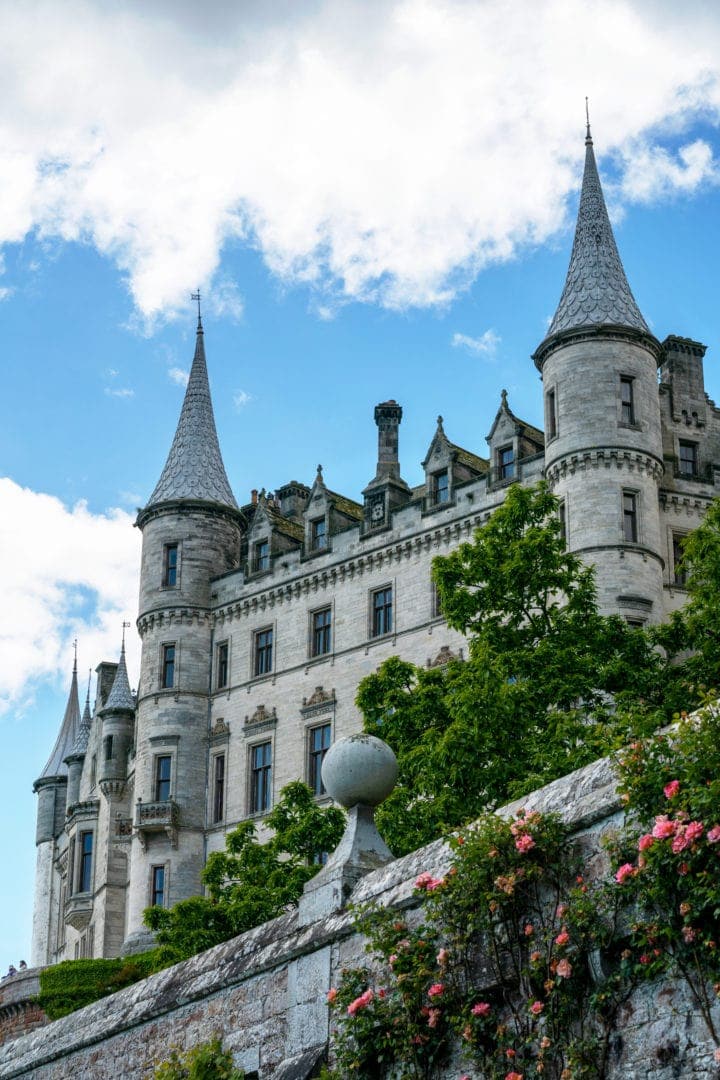
Dunrobin Castle’s conical spires are reflective of many French chateaux and give it a fairytale quality and romantic ambience.
Once inside, you are guided through the castle, stepping back through time from the newest to the oldest parts of the castle. It is a self-guided tour with plenty of information boards, and members of staff dotted around to answer any questions you may have.
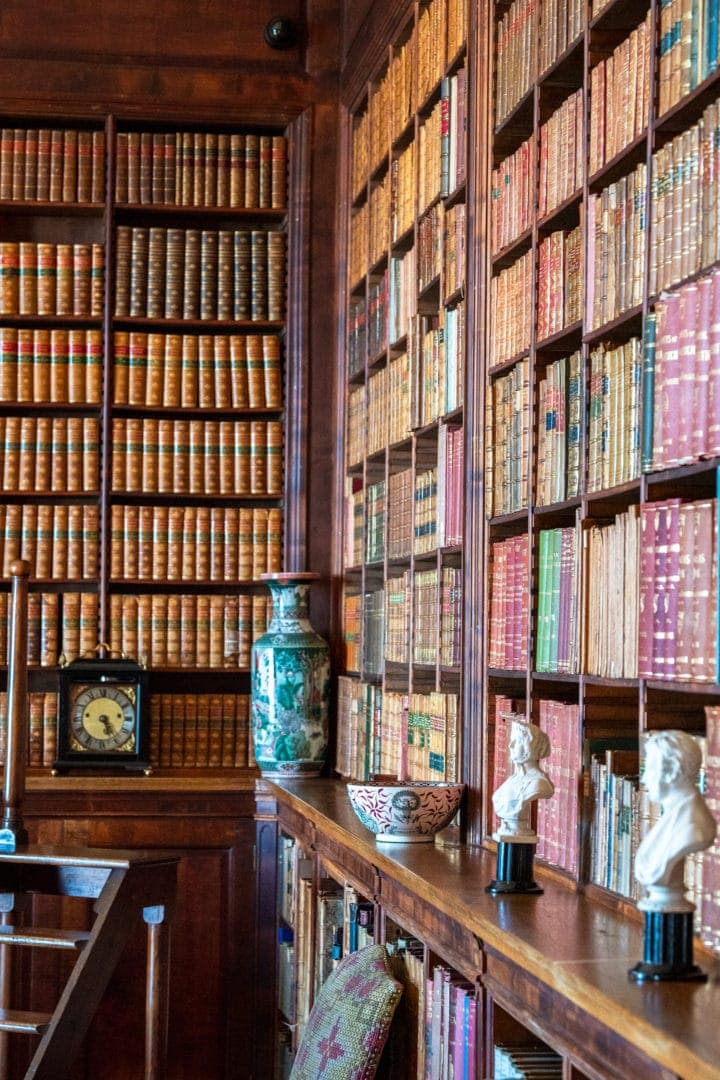
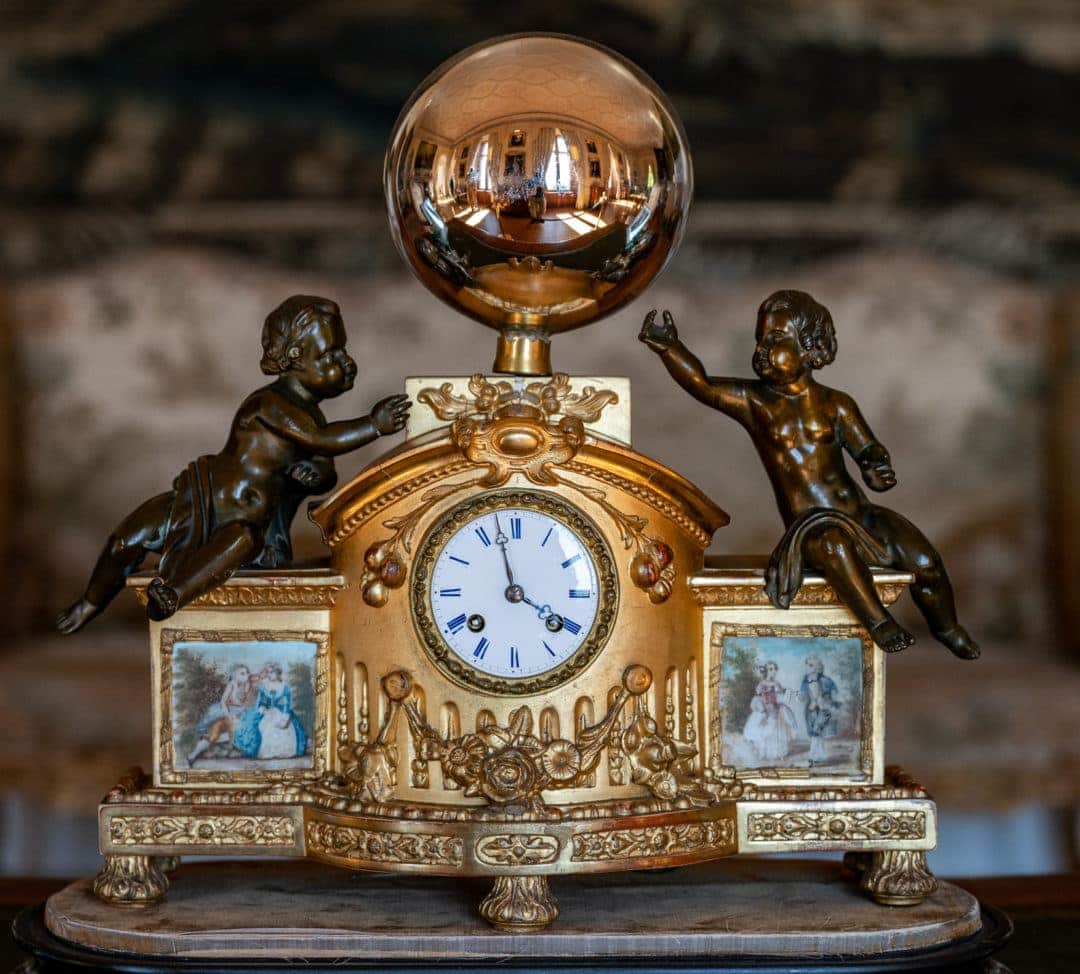
Dunrobin Castle Gardens
The gardens of Dunrobin Castle were designed by the architect Sir Charles Barry in 1850, inspired by the gardens of the Palace of Versailles in Paris.
These formal Victorian-styled gardens are a delight, with a collection of topiaries, box hedges, and flowers filling the air with heavenly scents. You’ll also unlikely miss the giant rhubarb plant, a native of South America with an enormous eight-foot leaf span.
The falconry display takes place on the lawn at the bottom of the garden.
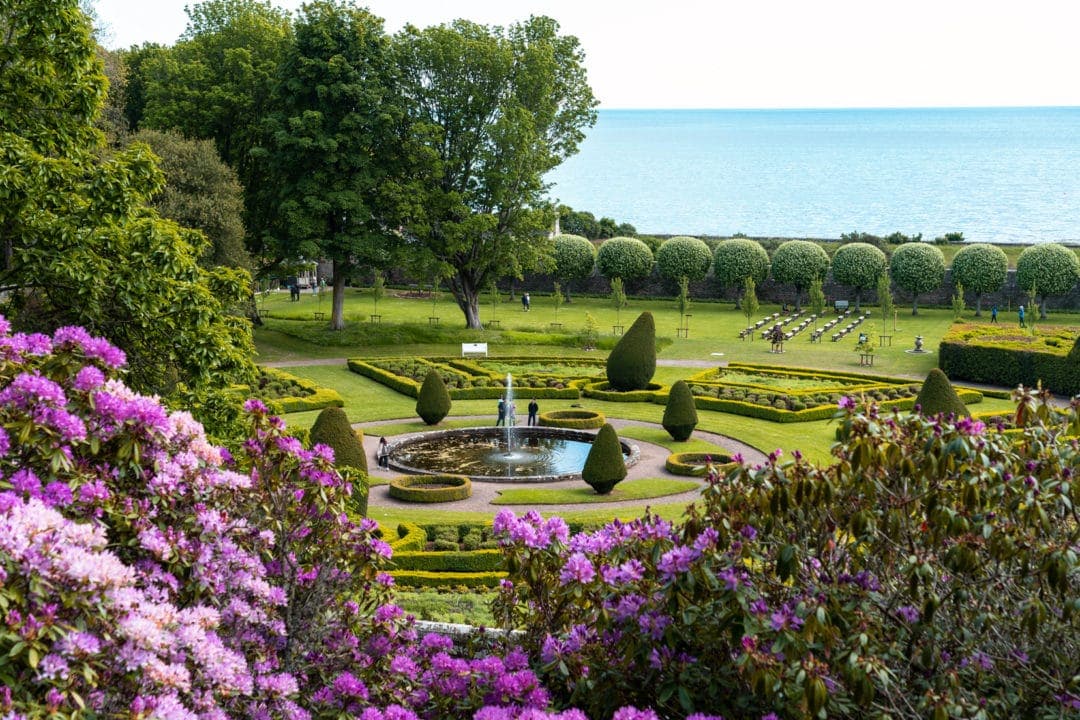
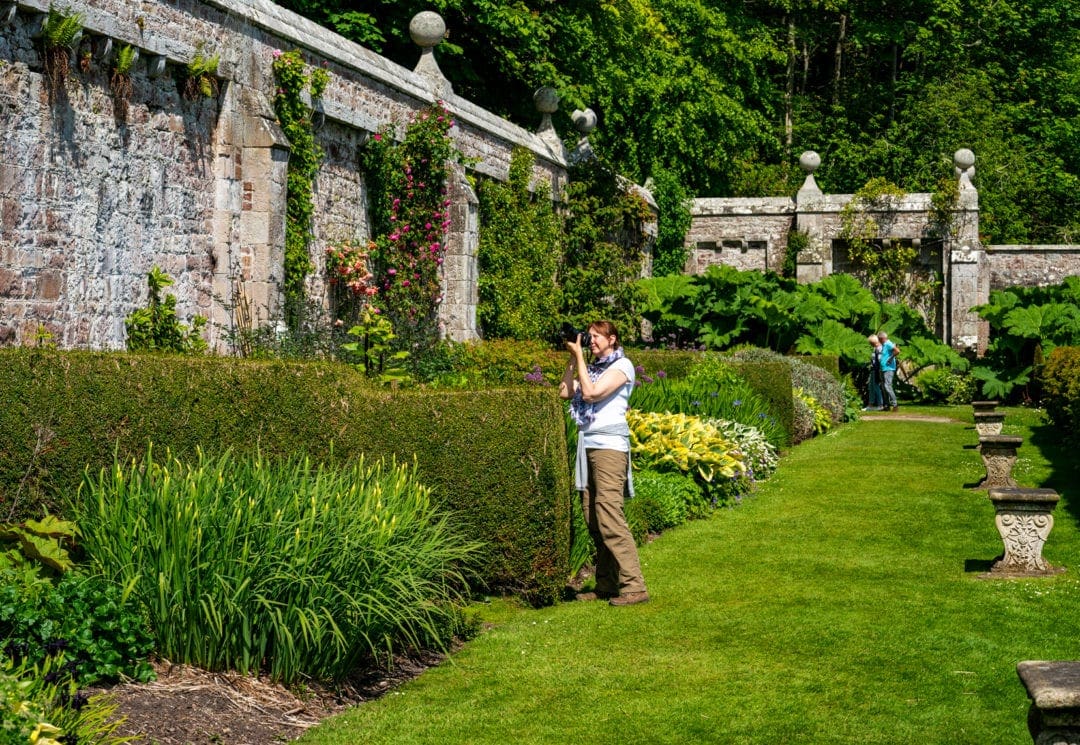

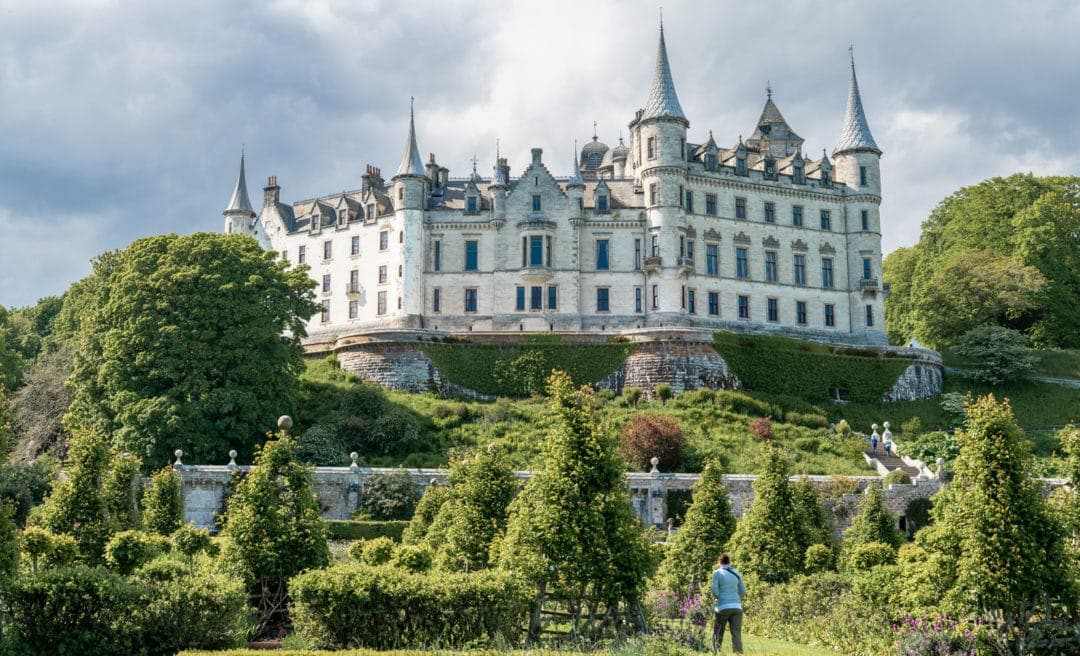
Dunrobin Victorian Museum
Hidden behind an old stone wall rests the Castle’s museum. It is not to everyone’s taste, with animal heads and stuffed animals adorning the walls and cabinets, but it is representative of the sport of hunting, a predominant pastime of the upper class in Victorian times.
The museum contains a large private collection of taxidermy dating from the early 1900s, with many of the animals shot by the family both in Scotland and on safari in Africa.
There are also Pictish stones and other archaeological relics in the museum.
Open 11 am – 4 pm daily
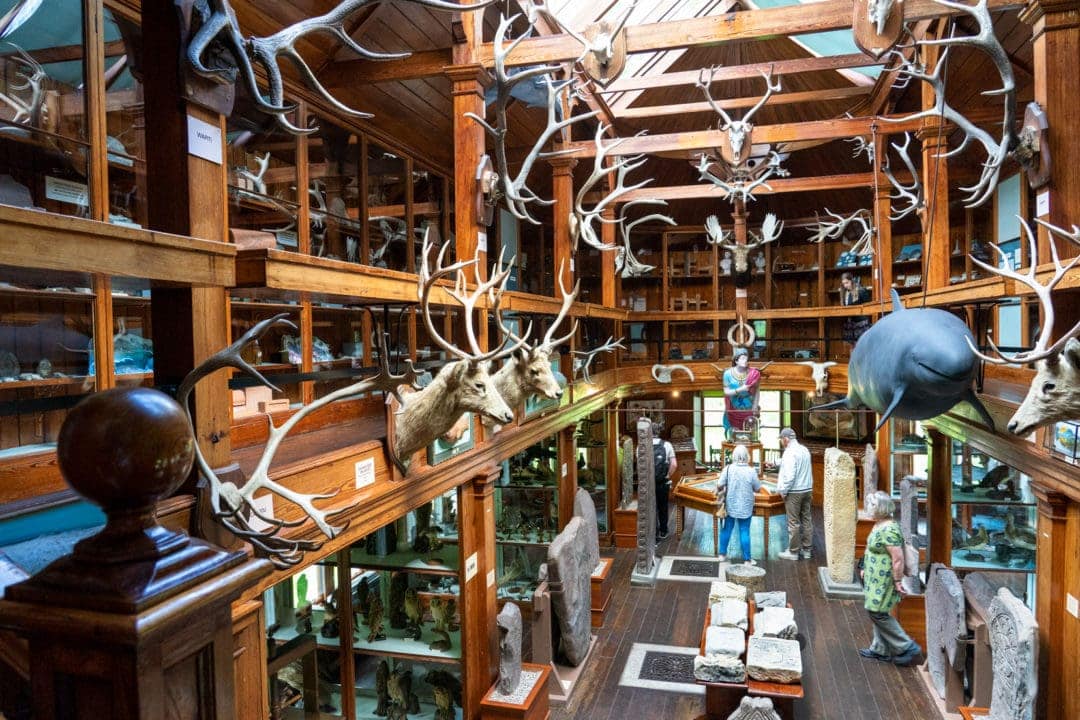
Where is Dunrobin Castle?
Dunrobin Castle is about 50 miles north of Inverness.
Address: Dunrobin Castle, Golspie, Sutherland, Scotland, KW10 6SF
Helpful Information for Your Visit to Dunrobin Castle
- Dunrobin Castle Opening Times: 1st April – 31st October. For daily opening times and current prices, check the Dunrobin Castle website.
- Parking: The car park at Dunrobin Castle is free.
- Ticket Purchase: Tickets can only be bought at the entrance, not online.
- Ticket Inclusions: Dunrobin Castle tickets include access to the castle, gardens, and falconry display.
- Ticket Type: Only all-in-one tickets are available (not just garden tickets).
- Backpacks/Large Bags: Must be left at reception when touring the inside of the castle but can be collected to tour the gardens.
- Amenities: There is a gift shop and tearoom on the ground floor of the castle.
- Tearoom: Serves hot food at reasonable prices (e.g. chicken coronation stuffed jacket potato with salad for £8.50).
- Pets: Dogs are not allowed in the castle gardens.
- Photography: Photos can be taken throughout the castle, but no flash photography.
- Drones: Drones are forbidden.

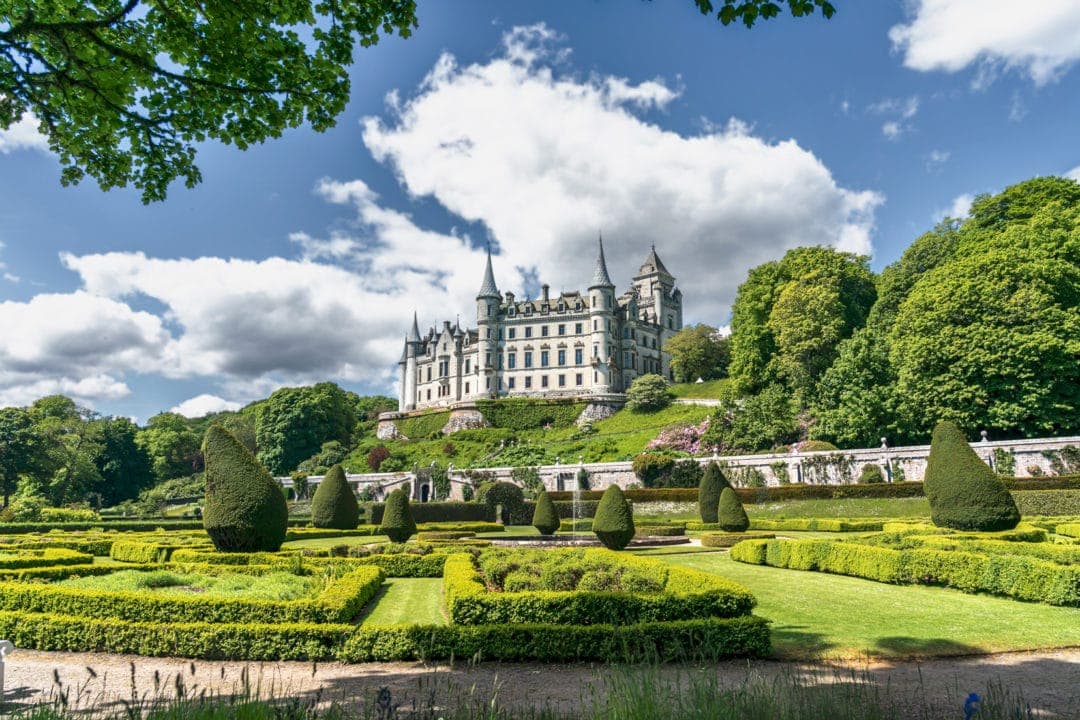
Handy Notes for Dunrobin Falconry Display
Falconry Display Times: 11:30 am and 2:30 pm daily (1st April – 30th September).
Arrival Tip: Arrive 20-30 minutes early for front-row seats, especially if tour buses are present.
Watching Both Displays: If you’re spending the day at the castle, you can enjoy both displays. They often feature different birds and performances.
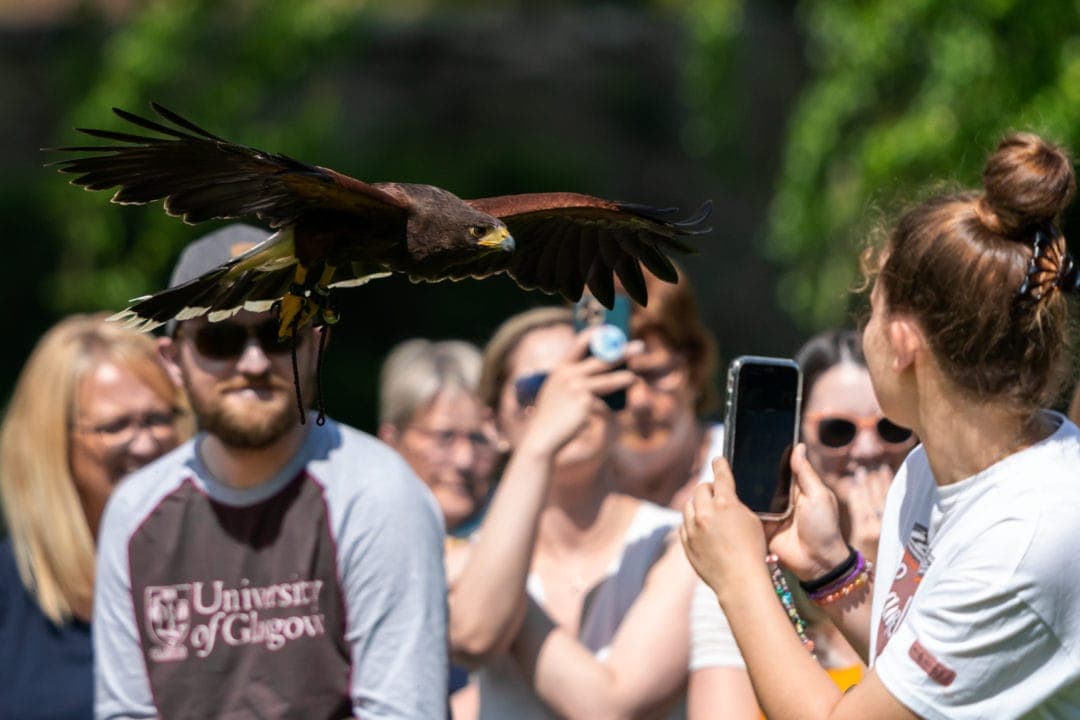
FAQ’s
Does Anyone Live in Dunrobin Castle?
Yes, the 25th Earl of Sutherland lives in Dunrobin Castle.
What Birds Are At Dunrobin Castle?
Falcons, owls and hawks feature in the Falconry at Dunrobin Castle.
Can You Take Dogs To Dunrobin Castle?
Only assistance dogs are allowed inside Dunrobin Castle and the gardens.
Dunrobin Castle Falconry Display … That’s a Wrap
We spent most of the day at Dunrobin Castle and had such a great time, we watched the morning and afternoon Falconry displays.
The visit to the castle itself is interesting and the gardens are a delight to wander through, but the addition of the Dunrobin falconry display and learning about this ancient art made the trip extra special.
The display melded together with the history of Dunrobin Castle, brought to life the way our Scottish ancestors … of which I have many…. but I’ll leave that tale for another day.
Have you visited Dunrobin Castle? What did you think of Falconry? Drop us a comment below.
Pin and Save for Later
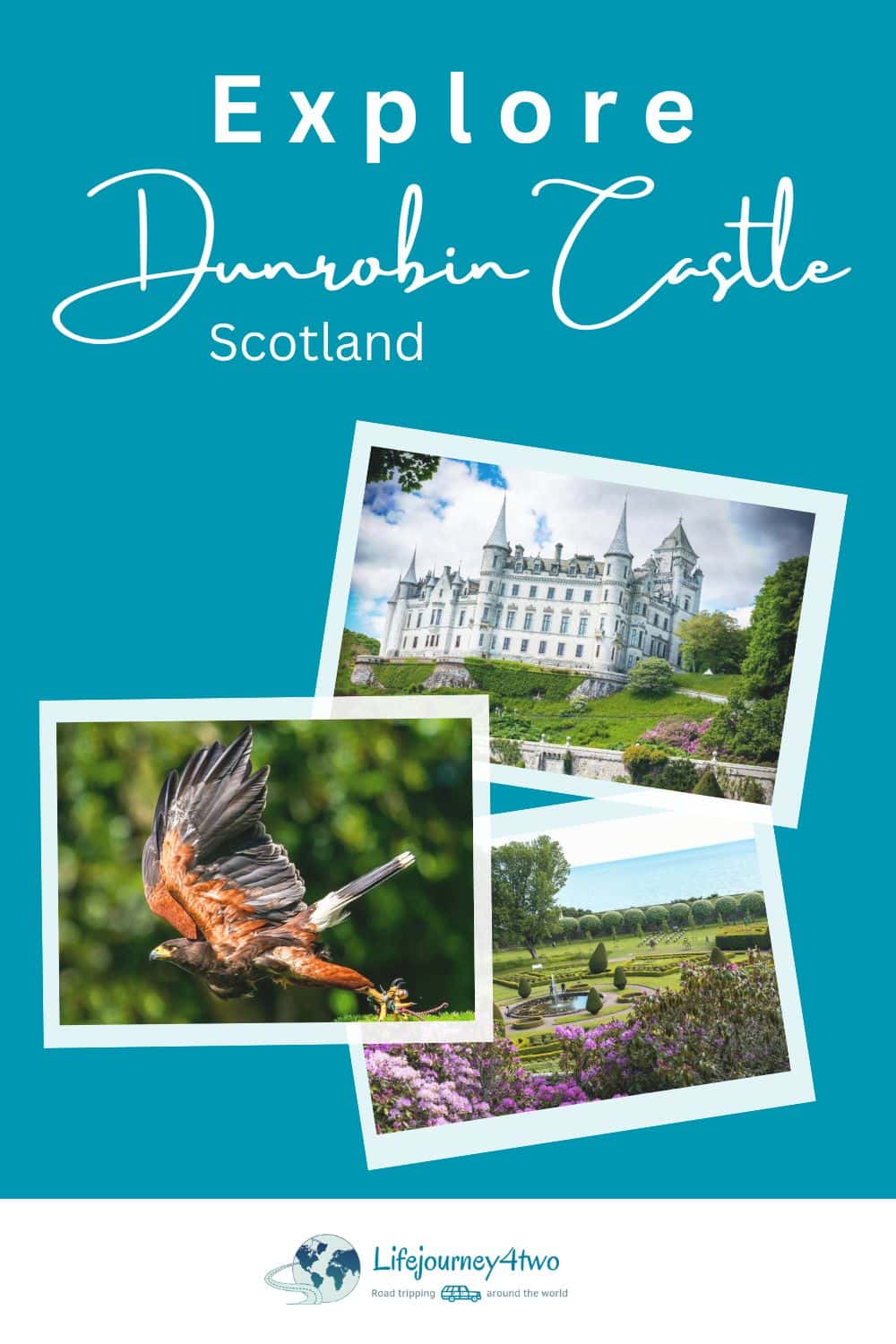
Read More:
- SCOTLAND: Scotland Castle Tours: Best Guided Tours and Self-Drive
- SCOTLAND: Scotland Travel Guide
- SCOTLAND: Guide to the Best Aberdeenshire Castles
Planning Your Travels?
These are the travel resources we recommend and use when planning our trips.
- 🚘 Car Hire: We use DiscoverCars.com
- Motorhome/Campervan Rental: We highly recommend the Motorhome Republic
- 🪪 Order your International Driver’s Licence online here
- 🛏 Book Accommodation: We use Booking.com to find accommodation that suits our budget
- 🐶 Pet Sitting/Pet Sitters: Check Out TrustedHousesitters here (Use our Discount code: LIFEJOURNEY25 for 25% off. )
- Activities and Experiences: Get Your Guide and Viator
- Travel Insurance: Safetywing or World Nomads
- 🥾 Travel Gear and Accessories: Check out our top picks here — Lifejourney4two page on Amazon
For a more thorough list, visit our Travel Resources page here.

